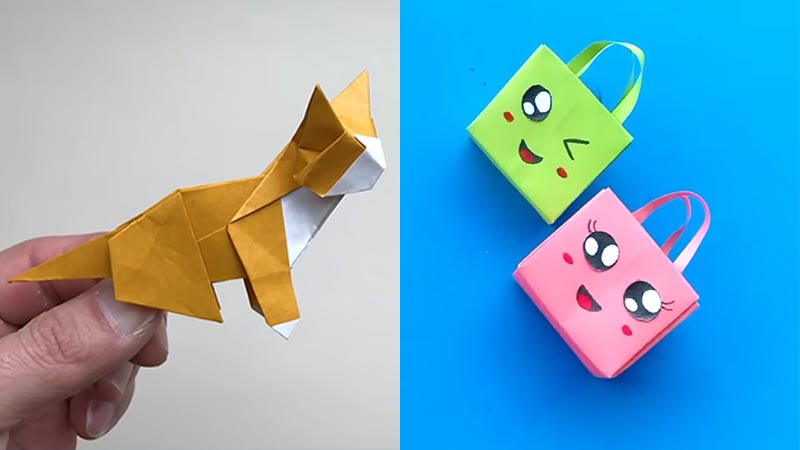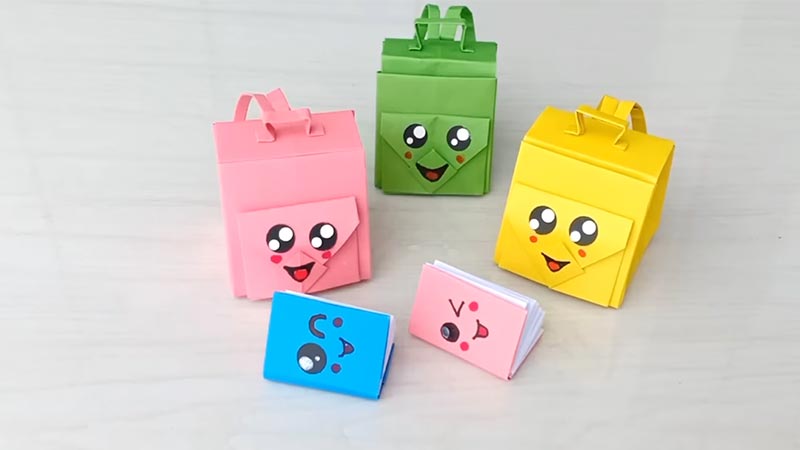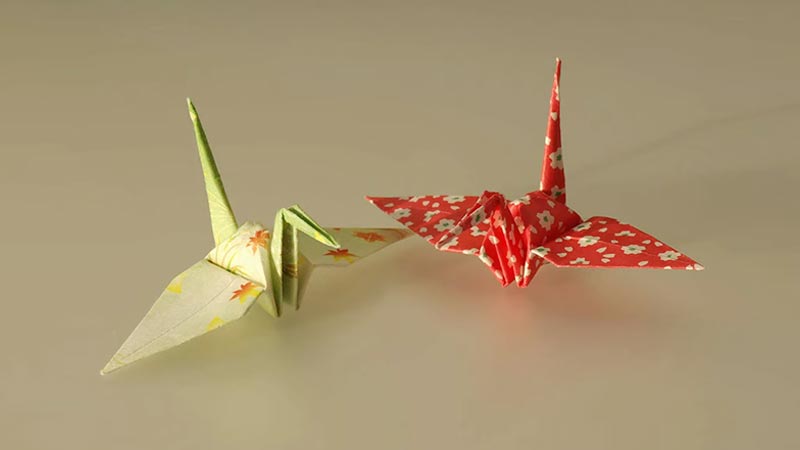Origami, the ancient Japanese art of paper folding, unfolds a captivating debate: Is it primarily art or craft? This question invites us into the dynamic world of creativity, precision, and interpretation.
On one hand, origami serves as a canvas for artistic expression, where paper becomes a medium for emotions, narratives, and aesthetic marvels. It showcases the boundless ingenuity of artists who sculpt paper into intricate forms, pushing the limits of what’s possible.
On the other hand, origami involves technical mastery, demanding precise folds and adherence to instructions, reminiscent of traditional crafting.
The intersection of art and craft in origami is a fluid and fascinating territory where the intent of the creator and the perspective of the viewer converge.

Is Origami Art Or Craft?
Origami’s classification as art or craft is subjective. It can be both, depending on intent and perspective. When approached as a means of creative expression, origami becomes art, conveying emotions and exploring abstract concepts.
Technical precision, adherence to instructions, and utilitarian aspects define it as a craft. Craftsmen and craft enthusiasts may appreciate origami for its utilitarian aspects, such as creating practical items like boxes, envelopes, and functional objects.
The educational and problem-solving aspects of origami align with traditional crafting skills. Origami’s identity is not static; it can shift between these classifications based on the creator’s intent and the viewer’s perspective, making it a versatile and captivating form of paper folding.
How Does Origami as Art Express Creativity and Emotions?
Origami, when considered as an art form, provides a captivating avenue for expressing creativity and evoking emotions through the intricate folds of paper.
Here’s how origami achieves this:
Creative Potential
Origami begins with a simple, unadorned sheet of paper, representing a blank canvas. Artists can choose from a wide array of paper types, colors, and textures, setting the stage for creative exploration.
Transformation through Folds
Each fold and crease in origami is a deliberate act of creativity. These meticulous maneuvers bring life to a once-flat surface, turning it into a three-dimensional sculpture. The precision required in origami is a testament to the artistry involved.
Visual Storytelling
Origami often serves as a visual storytelling medium. By arranging folded figures and elements, artists can convey narratives and evoke emotions without using words.
The positioning of characters, objects, and scenes within an origami piece is a deliberate creative choice that influences emotional resonance.
Color Palette
The selection of paper color plays a crucial role in emotional expression. Bright, vibrant hues can evoke feelings of joy and exuberance, while subdued and muted tones may convey a sense of calm or introspection.
The artist’s choice of colors is a creative decision that influences the emotional impact of the origami piece.
Themes and Symbolism
Origami artists often explore specific themes, be it the natural world, cultural symbolism, or abstract concepts. These themes add depth and meaning to the artistic expression, allowing artists to convey a wide range of emotions through their work.
Personal Significance
For many origami artists, their creations hold personal significance. These pieces may be infused with the artist’s emotions, memories, or reflections, making them deeply personal expressions of creativity and sentiment.
Innovation and Interpretation
Origami encourages innovation and interpretation. Artists can push the boundaries of the art form by experimenting with new techniques and designs, introducing a fresh perspective and originality into their creations.
This innovative spirit is a manifestation of creative expression and emotional depth.
What Technical Skills Are Required for Origami as a Craft?

Origami, when approached as a craft, demands a set of technical skills that are essential for achieving precision and replicating specific models.
Here are the technical skills required for origami as a craft:
Folding Techniques
Origami involves various folding techniques, such as valley folds (folding the paper toward you) and mountain folds (folding the paper away from you). Understanding and executing these basic folding techniques with precision is fundamental to origami as a craft.
Understanding Symbols and Diagrams
Many origami instructions are provided in the form of diagrams or symbols that represent folding sequences. Proficiency in interpreting these visual guides is crucial to replicating models accurately.
Crease Accuracy
Origami relies on precise creases. Achieving straight, sharp, and clean creases is essential for the structural integrity of the model. Proper creasing ensures that the folds hold their shape and alignment.
Folding Symmetry
Origami often involves folding one side of the paper to mirror the other side, resulting in symmetrical models. Maintaining symmetry is a technical skill that requires attention to detail and alignment.
Model Replication
Origami as a craft involves following instructions to replicate specific models. The ability to reproduce the same design multiple times with consistency and accuracy is a hallmark of skilled origami craft.
Paper Selection
Choosing the appropriate type of paper is a technical decision in origami. Different types of paper (such as tissue paper, kami, or specialty origami paper) have distinct properties that affect the ease of folding and the final appearance of the model.
Precision in Measurement
Measuring and cutting paper to the correct size and proportion is important for achieving the intended outcome. Precision in measurement ensures that the folds align as specified in the instructions.
Advanced Techniques
As origami artists progress, they may explore more advanced techniques, such as wet-folding (dampening the paper to create softer curves), reverse engineering (creating models by deconstructing existing designs), or tessellation (repeating geometric patterns).
Patience and Persistence
While not a technical skill in the traditional sense, patience and persistence are critical when crafting intricate origami models. Achieving mastery often requires multiple attempts, revisions, and a willingness to learn from mistakes.
Mathematical Understanding
Some advanced origami models involve complex mathematical concepts. Developing a basic understanding of geometry and mathematics can be beneficial for crafting intricate designs.
What Defines the Intersection of Art and Craft in Origami?

Origami, the ancient Japanese art of paper folding, stands at a unique crossroads, where art and craft intersect and harmonize. This intersection is not defined by rigid boundaries but by the dynamic interplay of intent, perspective, and creative expression.
Here’s what defines the captivating and fluid intersection of art and craft in origami:
Creator’s Intent
The classification of origami as art or craft often hinges on the creator’s primary intent. When an artist approaches origami with the aim of expressing emotions, telling stories, or exploring abstract concepts, it transforms into art.
The artist’s creative intent drives the emotional and narrative aspects of origami.
Technical Precision
Origami as a craft emphasizes the importance of precise execution. Craftsmanship in origami involves following specific instructions, mastering folding techniques, and replicating models with accuracy. It showcases the technical precision and skill of the folder.
Viewer’s Perspective
The perspective of the viewer is equally influential in defining the intersection. Some viewers may appreciate origami for its aesthetic qualities, artistic expression, and emotional impact, defining it as art.
Others may emphasize the technical skill, precision, and replication aspect, defining it as a craft.
Hybrid Creations
Origami often blurs the lines between art and craft through hybrid creations that seamlessly combine artistic design with practicality. These models can serve both utilitarian and aesthetic purposes, highlighting the versatility of origami.
Diverse Interpretations
The art-craft intersection in origami is enriched by the diverse interpretations of the medium. It accommodates a wide range of creative expressions, allowing artists to embrace both the artistic and technical aspects simultaneously.
Innovative Exploration
Origami artists continuously explore new techniques and designs, pushing the boundaries and defying traditional categorizations. This spirit of innovation contributes to the dynamic nature of origami as it straddles the realms of art and craft.
FAQs
Can origami be both an art and a craft?
Yes, origami can simultaneously be art, expressing creativity and emotions, and craft, showcasing technical skill and precision, depending on the creator’s intent.
What are the primary factors that determine whether origami is considered art or craft?
Origami’s classification as art or craft depends on the creator’s intent, viewer’s perspective, and the balance between artistic expression and technical precision in a given piece.
What is the history of origami’s evolution as both art and craft?
Origami’s history is a journey from a traditional craft in Japan to a global art form, evolving with artistic expressions while preserving its craftsmanship.
What are the most notable origami creations and influential artists?
Notable origami creations include Robert J. Lang’s intricate insects and Satoshi Kamiya’s mythical creatures. Influential artists like Akira Yoshizawa and Michael LaFosse have left lasting impacts on the art form.
How does origami bridge the gap between art and craft?
Origami serves as a bridge through the creator’s intent; it can be both art and craft, blending creativity and technical skill, allowing a flexible interpretation.
To Recap
In the delightful world of origami, where paper is transformed into intricate wonders through the simple act of folding, the question of whether it is art or craft remains open-ended. Origami’s fluid identity showcases its versatility.
It can be the canvas for artistic expression, where emotions, narratives, and aesthetics flourish, or the embodiment of precision and replication, akin to traditional craftsmanship.
This versatility defies a singular classification, embodying both art and craft depending on the creator’s intent and the viewer’s perspective.
Origami’s unique ability to bridge these worlds enriches the art form, making it a fascinating realm where creativity and technical skill coexist harmoniously.
Ultimately, origami invites us to appreciate the multifaceted beauty of paper folding, whether as art, craft, or the delightful fusion of both.
Leave a Reply